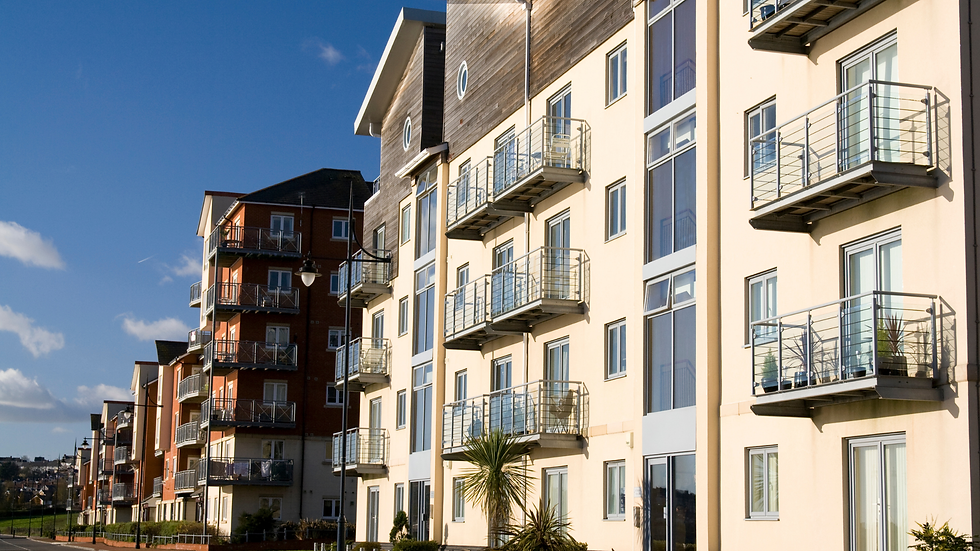
Building Safety Act 2025: What Housing Associations Must Do
- Ecosafe

- Oct 7
- 4 min read

As enforcement ramps up, 2025 becomes a defining year for housing associations, local authorities, and property managers.
The Act, introduced after Grenfell, transforms building safety culture, strengthens accountability, and protects residents. For providers, it creates both a legal duty and a reputational test. Housing associations failing to comply can result in enforcement action, financial penalties, and loss of residents’ trust.
This blog outlines what housing associations must deliver in 2025, the risks of falling behind, and how the right partners help ensure safer, compliant homes.
Understanding the Building Safety Act in 2025
The Regulator of Social Housing has made compliance the top priority of its 2025 agenda. Boards and senior leaders will face new consumer standards, stricter inspections, and direct accountability.
Key points:
Resident safety: Tenants expect clear evacuation strategies, working fire doors, and confidence that their homes are safe.
Legal accountability: The Act appoints duty holders, increases director liability, and expands the Building Safety Regulator’s powers.
Reputational impact: Failures generate tenant complaints, negative press, and funding risks.
For housing associations, the challenge is simple: balance compliance with day-to-day pressures like retrofit costs and void turnaround, without compromising safety.
Core Duties Under the Building Safety Act
The Act sets out clear obligations, especially for higher-risk buildings (18m+ or 7+ storeys with residential use).
Housing associations must:
Appoint duty holders who take responsibility for building safety.
Maintain the golden thread of information - digital records of safety-critical data.
Complete Safety Case Reports that demonstrate risks are identified and managed.
Update fire risk assessments (FRAs) regularly and whenever circumstances change.
Provide PEEPs (Personal Emergency Evacuation Plans) for vulnerable tenants.
Fix known defects promptly - from cladding to compartmentation and fire doors.
Example:
A housing officer reviewing a tower block discovers the FRA from 2021 is not up to date. Two tenants with mobility issues have no PEEPs. Under the Act, that gap risks immediate enforcement action.

The Risks of Non-Compliance
Non-compliance is no longer a technical oversight, it’s a legal, financial, and reputational risk.
Legal enforcement: The Regulator can issue notices, fines, or criminal sanctions.
Financial impact: Delays trigger costly emergency works (after the Twinnell House fire, 38 blocks needed urgent recladding).
Reputation: Providers who fall short risk tenant distrust, public scrutiny, and loss of credibility.
Delivering Fire Safety at Scale
Ecosafe supported The Beacon in Plymouth, a high-rise residential building requiring urgent safety upgrades to meet compliance under the Building Safety Act.
Our works included:
Installing new fire doors throughout the building.
Delivering compartmentation upgrades to maintain fire integrity.
Completing compliance inspections and remedial works to close identified FRA breaches.
The project brought The Beacon back into full compliance, restored confidence for residents, and ensured the landlord met regulatory deadlines.
Read more: The Beacon Fire Safety Works Case Study
High-Risk Buildings: Why All Stock Matters
Although the Act focuses on high-rise residential buildings, its culture of accountability applies across all housing stock.
Housing associations managing general needs homes still need to:
Meet Decent Homes Standard requirements.
Keep fire doors, alarms, and compartmentation working.
Maintain transparent records of inspections and remedial works.
Failing in one part of the portfolio can now trigger wider regulatory scrutiny.

Supporting Residents
Compliance includes a residents’ lived experience.
Example:
A tenant with mobility needs asks: “If there’s a fire, will I get out safely?”
The housing officer knows the FRA is overdue. Without action, they risk the tenant’s safety and regulatory compliance.
Housing providers protect lives and demonstrate accountability by maintaining up-to-date assessments and creating resident-specific evacuation strategies.
How Ecosafe Supports Housing Associations
Ecosafe partners with housing providers to deliver practical, compliant outcomes under the Building Safety Act:
Passive fire protection: fire doors, compartmentation, and cladding upgrades.
Fire risk assessments: delivered and updated by accredited professionals.
Refurbishment and safety upgrades: aligned with Decent Homes and current standards.
Why housing providers trust us:
We mobilise quickly for urgent compliance needs.
We work in live housing settings with vulnerable residents.
We provide transparent reporting that aligns with regulator expectations.
Role-Specific Summary
For Housing Officers
Keep FRAs up to date - don’t wait for regulator inspections.
Produce PEEPs with tenants in high-rise buildings.
For Asset Managers
Maintain a golden thread of data across your stock.
Prioritise safety works before aesthetic upgrades.
For Boards and Senior Leaders
Appoint and train accountable persons.
Treat building safety as a governance issue, not just a technical detail.

Ultimately
2025 marks a turning point. The Building Safety Act demands delivery, not preparation. Housing associations must act proactively - managing risks, engaging residents and partnering with contractors who understand compliance at scale.
At Ecosafe, our mission, Safer Homes, Brighter Futures, drives every project. From fire safety upgrades to evacuation planning, we help housing providers reduce risk, protect tenants, and build confidence.
Visit www.ecosafegroup.co.uk to see how we can support your compliance goals across London, the South West, Sussex, and the wider UK.
To discuss further, contact:
Liam Jacobs | Business Development Manager | liam@ecosafegroup.co.uk
.png)











Comments